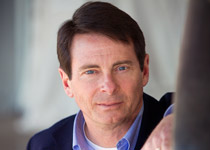Transitioning from one type to another builds skills
 The Aviat Husky’s fat wing seemed to feel right at home in the thin air of Wyoming’s Star Valley just upwind of the Grand Tetons. A light touch on the beefy control stick allowed us to maneuver near the ridge- lines, admiring the spectacular views while looking for game below. Headed back to a landing at nearby Alpine Airport, we skipped the long, paved runway in favor of a much shorter parallel grass strip—a surface the Husky’s plump tires prefer.
The Aviat Husky’s fat wing seemed to feel right at home in the thin air of Wyoming’s Star Valley just upwind of the Grand Tetons. A light touch on the beefy control stick allowed us to maneuver near the ridge- lines, admiring the spectacular views while looking for game below. Headed back to a landing at nearby Alpine Airport, we skipped the long, paved runway in favor of a much shorter parallel grass strip—a surface the Husky’s plump tires prefer.
Just 24 hours earlier I had landed a fully loaded Nextant 400XTi on Alpine’s paved runway, the swept-wing business jet seemingly not nearly as comfortable on the narrow strip as the Husky was on the turf. My rollout in the remanufactured Beechjet included a little zig and a zag as I jabbed the brakes a bit. A day later I landed a Cessna CJ jet on the same runway with a lot more finesse, the CJ’s straight wing and resulting slower landing speed a big plus in that environment.
The differences among the airplanes seemed particularly pronounced in the high density altitude situation that is day-to-day life during summer flights in Wyoming.
In thinking about how the widely diverse airplanes handled during my brief flights, I also thought back a few days when I had been doing light aerobatics in a T–6 Texan near sea level in Maryland and a cross-country in my Bonanza A36 from the long, wide sea-level runway at Frederick, Maryland, to a narrow runway tucked deep in a valley in wild and wonderful (and hilly) West Virginia. The excursion into Logan County Airport required precise speed control as we approached low over the forest and then a dive to the down-sloping runway after clearing a tree line—not a maneuver you’d want to try in a sweptwing jet. I particularly appreciated the newly installed angle-of-attack indicator on that flight.
Aside from the Bonanza flight, each of those flights was with a pilot far more experienced in those models than I am—just the way to handle transitions from one type of airplane to another. While it’s relatively easy to look at an airplane and predict its handling qualities, pilots transitioning among types don’t always do such a great job, as pointed out in a recently released online course by the AOPA Air Safety Institute. The Transitioning to Other Airplanes course outlines how to best move up, down, sideways, and into different levels of avionics among various types of aircraft. Runway excursions, loss of situational awareness, and spatial disorientation are common accident causes among pilots new to a particular type of aircraft. Interestingly, the accident data suggest that it is no easier to transition down to a simpler airplane than it is up to a higher-performance model.
You’d think if you could land a sweptwing jet on a narrow high-altitude strip, landing a Husky there would be no big deal. But one of the jet pilots in Wyoming commented about how he had attempted that and realized how the Husky’s lower wing loading and power loading dramatically impacted how the airplane handled; never mind the tailwheel, control stick, and tandem seating—all other significant differences between the types.
The Husky’s fat wing is optimized for low altitude and slow speed, allowing unbelievably slow approaches into short strips. But if you want to go fast and climb high, look elsewhere. It is in the high-altitude and high-speed cruise environment that the Nextant’s swept wing shines, rocketing to 41,000 feet in less than 30 minutes—where it will dash along at more than 400 knots. But that thin, swept wing demands landing speeds as high as the Husky’s cruising speed. So you can imagine how someone transitioning from one to the other needs the guidance of an experienced mentor pilot, good advice regardless of how great or small the difference among the models.
The ASI course points out many ways to prepare to transition from one type to another, urging pilots to consider each move as a “mini type-rating.” Keep in mind, though, that getting signed off to fly a new type of airplane is just the beginning. Months of regular flying may be needed to fully inculcate the differences into your skill set. The great part about it is that each new checkout can be structured to meet the requirements of a flight review and each new type of flying helps build your experience and confidence level. Such challenges are a rewarding part of general aviation flying and each opens new opportunities and widens horizons. Use this fall’s great flying weather to stretch your skills by moving up, down, or sideways into a new model. The experience will improve your everyday skills no matter what you fly.
Email [email protected]
Editor in Chief Tom Haines has flown more than 100 models of airplanes, but says he’s mastered none.
Social: Follow on twitter@tomhaines29


